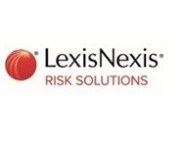Storm Arwen - Seeing clearly BEFORE the storm has come

Authored by Carla McDonald, Senior Vertical Market Manager, LexisNexis Risk Solutions UK and Ireland
Storm Arwen has highlighted once again, the challenge the insurance market faces in dealing with the increasing propensity of extreme weather events in the UK. While sub-zero temperatures and strong winds caused havoc with many homes still without power, flood is also a very real threat this winter as the Environment Agency is warning that there is an above average likelihood of a wet winter over the next three months. Clearly the insurance industry has no influence over when a natural catastrophe will happen, but there are now ways to control the controllable, to help mitigate risk and therefore minimise the financial and emotional fallout placed on the industry and policyholders alike.
Increasingly sophisticated geospatial data intelligence, a proactive knowledge sharing and education programme, as well as improved communication pre and post surge can all make a vast difference to the number and value of claims, and quality of claims handling, in a surge event.
By their very nature, weather related claims are an emotive issue, insurance call centre handlers often need to be part counsellor, part claims handler when advising policyholders during emergencies. By maximising the use of the intelligence available at their fingertips prior to a weather event, however, insurance providers can place themselves on the front foot. Geospatial data is often thought of as a reliable pricing tool, which of course it is but it also has huge value in extreme weather events. Near real time data on flood warnings and river flows can be viewed in tandem with insurance provider’s own customer data to understand who is in the path of a storm or flood, allowing time to forewarn individual commercial property and homeowners as events occur. In turn, policyholders can take preventative measures to minimise harm to themselves, their property, stock or possessions.
This intelligence can also help insurance providers to increase their task force in effected areas ahead of time, redeploying personnel where necessary such as home emergency teams and loss adjusters. What’s more, by seeing in near real time exactly where the affected areas are, insurance providers can proactively contact customers, who might not have easy access to insurance documents, to check on their status and instigate the claims process where necessary. When you bring in granular data on past claims made about a property, accessible from a market–wide contributory claims database, insurance providers can gain a much clearer view of a new claim. How does it fit with past claims related to the property? What was the cost the last time this home had a weather related claim? This insight can help claims teams provide the best possible service at all stages of the claims cycle.
Geospatial and prior claims data is nothing without great communication though. The use of the latest communications technology, like smartphone apps, can be fundamental in getting time sensitive information to those at risk, as well as expediating the claims process post event.
Climate change has made people more risk aware, there is more of an appetite than ever for businesses and individuals to connect with the insurance industry to proactively prepare for winter storm events. There is no time like the present to engage with customers to show them how they can help prevent fiscal loss in a flood situation. For instance, examining past claims data together might lead them to alter stock location to minimise damage. By encouraging board-level communication now amongst businesses large and small, companies can really help themselves minimise potential loss, as well as make more sustainable decisions post claim.
As the Environment Agency urges the public to take action to help prepare themselves and their properties for possible flooding, the insurance sector can also take action, maximising geospatial and market-wide claims data for effective education and communication, to help manage the tide of weather related claims forecast for 2022.
About LexisNexis
At LexisNexis Risk Solutions, we believe in the power of data and advanced analytics for better risk management.
With over 40 years of expertise, we are the trusted data analytics provider for organisations seeking actionable insights to manage risks and improve results while upholding the highest standards for security and privacy.
We enable insurers and brokers to improve decision-making, increase profitability and transform business performance with actionable insights from our data and analytics solutions. For more information, please contact risk.lexisnexis.co.uk/insurance or enquiries-info@lexisnexis.co.uk.

